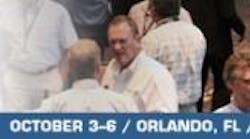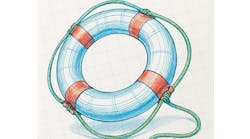Some six years ago, the engineering group responsible for instrumentation, controls and electrical systems at ExxonMobil Development Corp. set out to break free of increasingly complex and unsustainable project execution procedures. Under the vision of "It Just Happens," the group program set out to streamline processes for major capital project specification, design, testing and implementation—and catalyzed the development and deployment of new technologies across industry in the process.
"We had to dramatically change how we were executing projects: traditional methods simply weren’t sustainable," said Sandy Vasser, IC&E manager and advisor (retired) in his keynote address, ‘10 Years Before and 10 Years After 'It Just Happens,’” this week at the 2016 meeting of the North America Yokogawa Users Group in Orlando.
"We'd started ExxonMobil Development Corp. just a few years earlier to initiate major, capital projects upstream, and these included 15-20 projects per year that had to be successful. So, we checked with other users, incorporated our own best practices, and developed new, detailed procedures we could follow from project to project."
This initial effort also led ExxonMobil Development to adopt a Main Automation Contractor (MAC) concept, in which a highly qualified, well-resourced control systems specialist was contracted to engineer, supply, procure and manage instrumentation, control systems and associated interfaces for all project components and facilities. MAC was eventually deployed on 17 different projects; MAC teams implemented cost-effective, fit-for-purpose controls; and Vasser reported it also helped reduce project costs by improving the organization's front-end engineering and designs (FEED) with better definitions and descriptions.
Seeking simplification
Despite these gains, Vasser reported that ExxonMobil Development's capital projects were still held back by inefficiency and rework. "Automation remained on the critical path," he said. "Dependencies on other disciplines continued, such as on process, loss and prevention, mechanical and process engineers, who were all concerned with their own schedules.” Ongoing design changes meant repeated rework as well. “All of this required extraordinary measures to deliver projects, and though costs and schedules were managed, they were more than acceptable and growing."
[sidebar id =1]Consequently, Vasser, his colleagues at ExxonMobil Development and their partners like Yokogawa Corp. of America cooperated on realizing the vision of "It Just Happens," to simplify and standardize project execution procedures for process automation. "We challenged every process and technology, and eliminated processes and hardware wherever we could," said Vasser. "However, we didn't want to just identify problems and bolt on solutions afterwards because we also wanted to reduce customization."
Vasser reported that ExxonMobil Development's new approach:
- Reduced customization and reliance on standard solutions by pushing customization to the software and using standard hardware, and eliminating the need for the infrastructure to support customized solutions;
- Reduced complexity and simplified designs by reducing component counts and divergent systems, taking full advantage of the capability of installed systems, and reducing and simplifying interfaces;
- Eliminated, simplified or automated processes;
- Reduced the number of dependencies;
- Reduced automatically generated documentation; and,
- Developed or enabled trust with suppliers and contractors.
"The truth about customization is that engineers believe every non-standard requirement is there to address a lesson learned, and can be easily justified considering the incremental cost of the physical change. Management, however, believes the high cost of projects is caused by engineers gold-plating their designs," explained Vasser.
The weight of customization
"The reality is that although there are increased costs caused by non-standard requirements, the real impacts to projects are caused by the costs and delays associated with the infrastructure required to support the customization process,” Vasser said. “For example, in the past, we might have 200 cabinets, but they were all different inside, and had to be individually designed, manufactured, revised and customized. This method was way too complex, while required specifications also generated massive amounts of paperwork, conflicts, errors and inconsistencies, work out of sequence, redesigns and resubmissions by suppliers. We needed to agree on specifications, and order against them commodity by commodity and system by system."
As a result, "It Just Happens" focused on several key areas, such as safety and cybersecurity, as well as areas with lots of customization, excessive time and/or resources used, lots of rework, dependencies on other disciplines, and related actions performed multiple times for different reasons. Vasser added that key automation and other technologies aiding these efforts included:
- Smart, configurable I/O in standard cabinets and/or field junction boxes;
- Virtualized computing, both runtime and engineering;
- Auto-detect, -interrogate, -configure, -enable, -document I/O (DICED I/O) via HART and non-HART communication protocols;
- Safety instrumented systems (SIS) logic solver directly programmed using translated cause-and-effects;
- Seamless integration between automation and electrical systems;
- Simplified package interface solution;
- Wireless field instruments; and,
- Increased use of DC power, such as 125 VDC.
After consulting with Yokogawa, Vasser reported that the company’s contribution to making "It Just Happen" include Network-IO for process and safety applications in standard cabinets and/or junction boxes; virtualized computing; Agile Project EXecution (APEX) methodology; simplified commissioning procedures; improved integration between automation and electrical systems; simplified package interface; and wireless field instruments.
"On the physical side, we now have standard, non-customized components ordered by part number; detailed specifications aren't required. We’ve reduced the number of cabinets by 66% and reduced terminations by 70%. Further, no hardware factory acceptance test (FAT) is required for standard equipment.” He also cited reducing the footprint of local equipment rooms by up to 40%, replacing many copper cables with fiber-optic cables and the use of wireless to further simplify and reduce the weight of topsides and modules.
"Meanwhile, we achieved simplified designs with less customization; eliminated the schedule ties and engineering dependencies between hardware delivery and plant design; and eliminated design churn.” There also have been fewer opportunities for errors in construction, less inspection, less troubleshooting, and less vendor data that must be reviewed and approved. “As a result, we've reduced automation engineering by 30-40%, construction by 20-30%, and commissioning by 30-40%. Automation schedules have been compressed by as much as 25%, and it’s off the critical path.”
In the future, Vasser concluded that new challenges for the automation industry will include controls that can "age in place" with building blocks that are easier to upgrade and repair, and have cybersecurity built into their designs, as well as proper alarm configurations from the outset. He also called for simpler HMI graphics, and self-calibrating field instruments. "We should be able to replace components easily and on a timely basis when they age, which is why we've also undertaken our Open Process Automation Initiative," added Vasser. "The oil and gas industries are all struggling, but the real leaders will be those who use this lull in activity to develop transformational solutions to do more with less when conditions improve."
[sidebar id =2]






